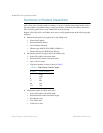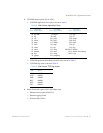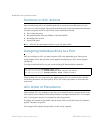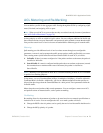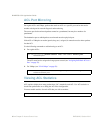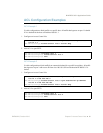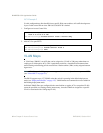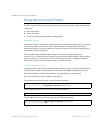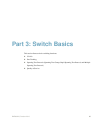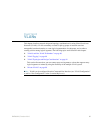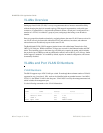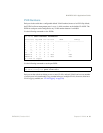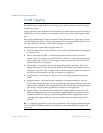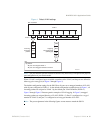
BLADEOS 6.5.2 Application Guide
84 Chapter 5: Access Control Lists BMD00220, October 2010
Using Storm Control Filters
The G8124 provides filters that can limit the number of the following packet types transmitted by
switch ports:
Broadcast packets
Multicast packets
Unknown unicast packets (destination lookup failure)
Broadcast Storms
Excessive transmission of broadcast or multicast traffic can result in a broadcast storm. A broadcast
storm can overwhelm your network with constant broadcast or multicast traffic, and degrade
network performance. Common symptoms of a broadcast storm are slow network response times
and network operations timing out.
Unicast packets whose destination MAC address is not in the Forwarding Database are
unknown unicasts. When an unknown unicast is encountered, the switch handles it like a broadcast
packet and floods it to all other ports in the VLAN (broadcast domain). A high rate of unknown
unicast traffic can have the same negative effects as a broadcast storm.
Configuring Storm Control
Configure broadcast filters on each port that requires broadcast storm control. Set a threshold that
defines the total number of broadcast packets transmitted (100-10000), in Megabits per second.
When the threshold is reached, no more packets of the specified type are transmitted.
Up to nine storm filters can be configured on the G8124.
To filter broadcast packets on a port, use the following commands:
To filter multicast packets on a port, use the following commands:
To filter unknown unicast packets on a port, use the following commands:
RS G8124(config)# interface port 1
RS G8124(config-if)# broadcast-threshold <packet rate>
RS G8124(config-if)# multicast-threshold <packet rate>
RS G8124(config-if)# dest-lookup-threshold <packet rate>
RS G8124(config-if)# exit



